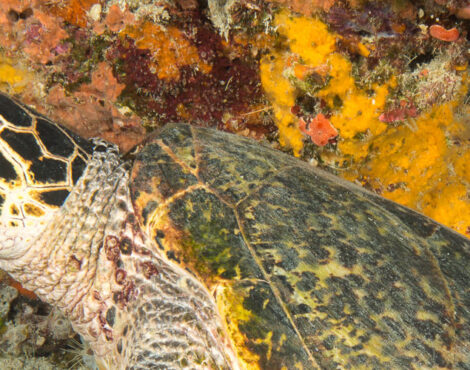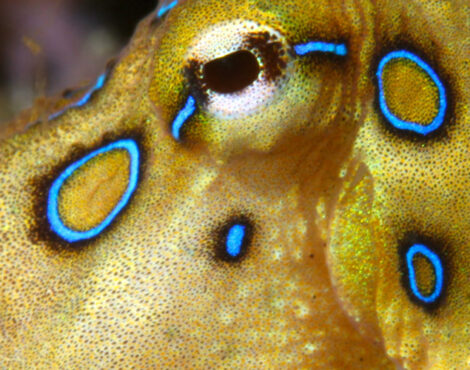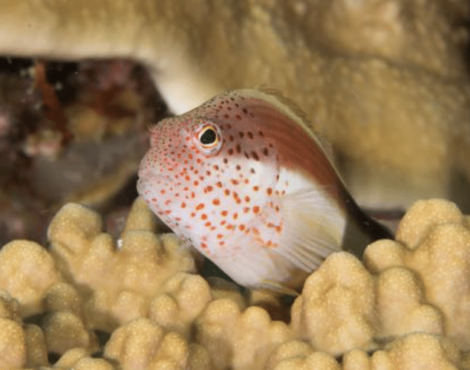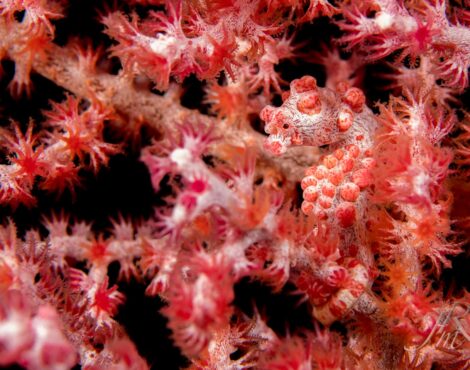Most divers who visit Bunaken Marine Park are interested in seeing the macro life that North Sulawesi is most famous for, but some dives are more âcritterfulâ than others, and on occasion, all the critters seem to hiding from our guides. Luckily, there are plenty of other interesting things to see so your dives will always be interesting.
The region is not famous for its âbig fishâ. We do have some sharks, but not in the quantity and variety you might find in other Indonesian dive destinations such as Komodo. Most common pelagic sightings are tuna, giant trevally, or napoleon wrasse.
Manta rays do occasionally pass by, but sightings are so uncommon it is never something we will expect to find or mention in a dive breifing. That being said, we do have large rays in Bunaken Marine Park, with the most common being the beautiful and graceful spotted eagle ray.
What is a spotted eagle ray?
Eagle rays are a group of cartilaginous fish (like sharks, skates, and other rays). Eagle rays are distinct from manta and devil rays, in that they have teeth and use them to crush their prey, rather than filter feeding plankton.
Spotted eagle rays (Aetobatus narinari) are perhaps the best known species of eagle ray, and they can be found throughout tropical coral reefs worldwide.
What does a spotted eagle ray look like?
Spotted eagle rays are instantly recognisable from their large wingspan, long tails, and distinctive colouration. Their dorsal side (top) is black and covered in white spots, hence the name spotted eagle ray. Their underside is almost completely white with the exception of few darker blotches â which varies from individual to individual.
Their body is roughly diamond shaped, and their head and snout is distinctly flattened, sharing similarities with a platypusâ bill. The tails are much longer than many other rays, and have between two and six venomous spines just behind the pelvic fins. These venomous spines are only used for protection from predators.
A fully grown eagle ray can measure as long as five metres from snout to tail, although more than half of this length is made up from the tail. The wingspan can measure up to three metres in the largest specimens, and they can weigh up to 230 kilograms.
Spotted eagle ray behaviour.
Spotted eagle rays are usually spotted by themselves or in pairs, although on occasion they can be seen swimming in large groups.
They have a swimming style very similar to manta and mobula rays â using their âwingsâ to swim how a bird would fly, rather than undulating their fins like a stingray would. They generally swim quite slowly, however if they feel threatened they can use their powerful fins to quickly vanish. They are often spotted using their powerful fins to perform acrobatic leaps from the water â something we regularly see over the shallow seagrass meadow in front of Bunaken village.
Like most sharks, spotted eagle rays ovoviviparously, meaning that the egg develops and hatches inside the female, feeding off the yolk sac until live birth. The gestation period is around one year, and the mother ray will give birth to up to four pups. Newborn spotted eagle rays have a disc measurement of between 15-35 centimetres, and take between four to six years to mature into adults.
Spotted eagle ray feeding habits.
Spotted eagle rays are carnivorous, feeding primarily on bivalves, crabs, and whelks, although they will also feed on other crustaceans and molluscs if they can find them.
They have a unique feeding behaviour for rays, using their flattened snout to dig for their food over shallow sand and seagrass meadows. Due to the tidal fluctuations in Bunaken Marine Park, they must leave the shallow water and swim in deeper waters near the wall when the tide goes out.
Once they have found their prey, they use their specialised flattened teeth to crush the hard shells. Their jaws have developed calcified struts to help support their jaw while trying to crunch through the hardest shells without damaging their teeth or jaw.
Where can I see spotted eagle rays?
There is no particular dive site in Bunaken Marine Park where you will and wont see a spotted eagle ray. As they feed over sand and seagrass, we tend to have more encounters at sloping Bunaken sites such as Fukui or Lekuan III, Mantehageâs Tinongko, Bango, or Barracuda Point, or clearer slopes on the North Sulawesi mainland, such as Kalumpang or Budo.
Both divers and snorkellers have equal opportunity to spot these amazing fish, as they tend to swim in the shallow water during high tide â moving between the shallow seagrass meadows and deep reefs. There are plenty of opportunities to see them while snorkelling over the seagrass meadow directly in front of Siladen Resort & Spa as long as the tide is high.
Although spotted eagle rays are generally shy creatures, it is possible to approach them as long as you donât make any sudden movements. Snorkellers will have a better opportunity to stay close to them as they feed over the shallows, but as long as divers donât chase them, they will stay in the same area for some time.




